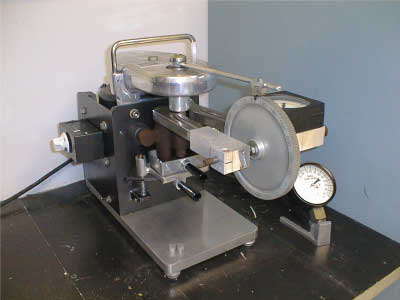 38 Years of Manufacturing the Highest Quality Performance Oil Products Available
38 Years of Manufacturing the Highest Quality Performance Oil Products Available
ProTecta Precision Oiler
FALEX PIN & VEE BLOCK TEST

Laboratory bench test machines can and do give practical and meaningful results in rating lubricants. These results can be shown to correlate with service use of the lubricants if proper test procedures are applied.
The Falex Lubricant Testing Machine is shown above. A recording instrument gives a trace of the torque or friction developed during the test. A steel journal is rotated against two stationary V-blocks to give a four-line contact. The test pieces and their supporting jaws are immersed in the oil sample cup for oil lubricants. The journal is driven at 250 rpm and load is applied to the V-blocks through a nutcracker action lever arm and spring gage.
The load is actuated by means of a ratchet wheel mechanism that also indicates wear like a micrometer. This micrometer arrangement allows the measurement of wear while the test is in progress. Each of the 18 teeth on the ratchet wheel equals .001 inches of wear. The entire load assembly is free to rotate about the main shaft and friction developed during the test is shown in inch-pounds on the torque gage, or on the recorder chart. The gage will read a maximum load capacity of 4500 pounds.
SFR performed a more severe version of this test called the Falex Step-Up Wear Test which requires each load to run for a full minute prior to failure or it does count at that level in reducing friction for a long period of time. The ProTecta Precision Oiler was used for the test, as a comparison we tested the Precision Oiler against a much heavier motor oil, which should perform even better than a lightweight household oil. The results are below:

